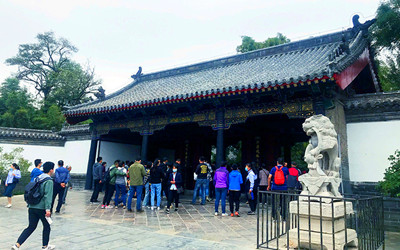Skype: neodalle-travel
Tel: +86 135 7447 2266
E-mail: sales@visitaroundchina.com
 Shandong, with a history of more than 5,000 years, is considered one of the birthplaces of Chinese civilization. It has also been the home of a large number of historical figures, whose important influences are still evident in contemporary China. Confucianism, founded by Confucius, the great thinker, educator and statesman is the pillar of traditional Chinese culture and has exerted great influence in the world.
Shandong, with a history of more than 5,000 years, is considered one of the birthplaces of Chinese civilization. It has also been the home of a large number of historical figures, whose important influences are still evident in contemporary China. Confucianism, founded by Confucius, the great thinker, educator and statesman is the pillar of traditional Chinese culture and has exerted great influence in the world.Shandong has been a political, economic and cultural center of China since ancient times. During the early Xia Dynasty, in 21st century B.C., the tribes of the Dongyi people lived here. The early activity center of the Shang Dynasty (from around 17 B.C. to 11 B.C.), was in Southwest Shandong. During the Spring and Autumn Period, (between 770 B.C. and 221 B.C.), the Qi and Lu states under the Western Zhou Dynasty (from around 11th century B.C. to 256 B.C.), are now the largest states in today's Shandong. Since the two states exerted a significant influence on the politics, economy and culture in history of China, Shandong is also nicknamed "Qilu"; furthermore, "Lu" is used as an abbreviation for the province.
Shandong was first used as a geographical name during the Warring States period (475 B.C.-221B.C.).It generally referred to the area east of the Taihang Mountain. The name Shandong was used to describe an administrative area in the Jin Dynasty (1115-1234). During the Yuan Dynasty (1206-1368), the government established Shandong "dao" (an administrative division at that time).In the Ming Dynasty (1368-1644), the government established Shandong "buzhengsi" (an administrative division), forming a territory similar to today's Shandong Province; most of the names of the counties were used up until recently. Shandong Province was formally established in the Qing Dynasty (1644-1911), with its capital at Jinan. After the founding of the People's Republic of China in 1949, the province assumed its present administrative division after several adjustments.
 Ask Questions ?
Ask Questions ?